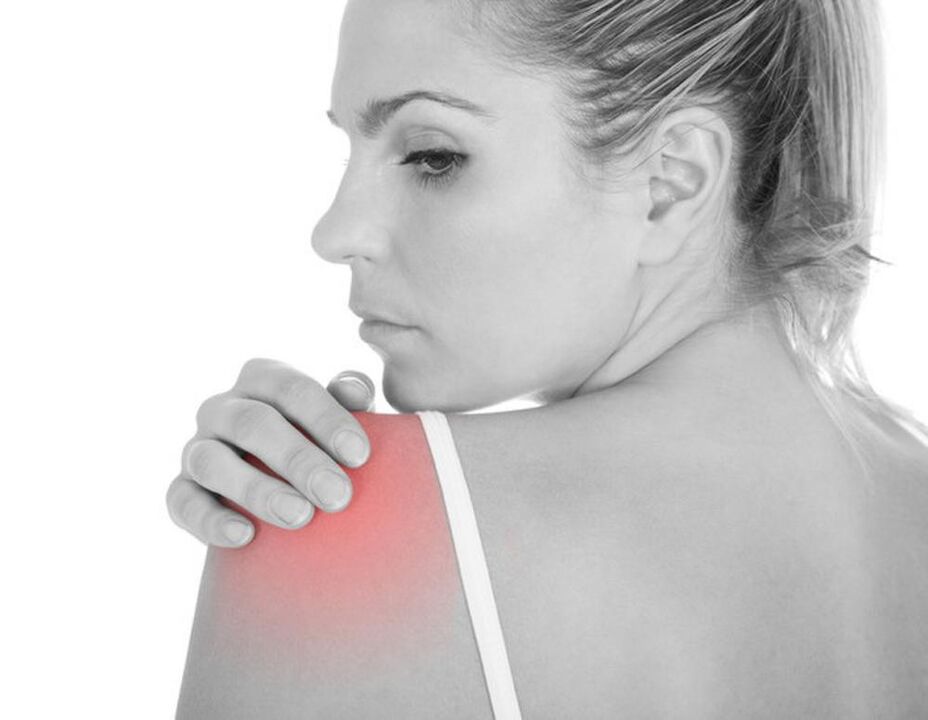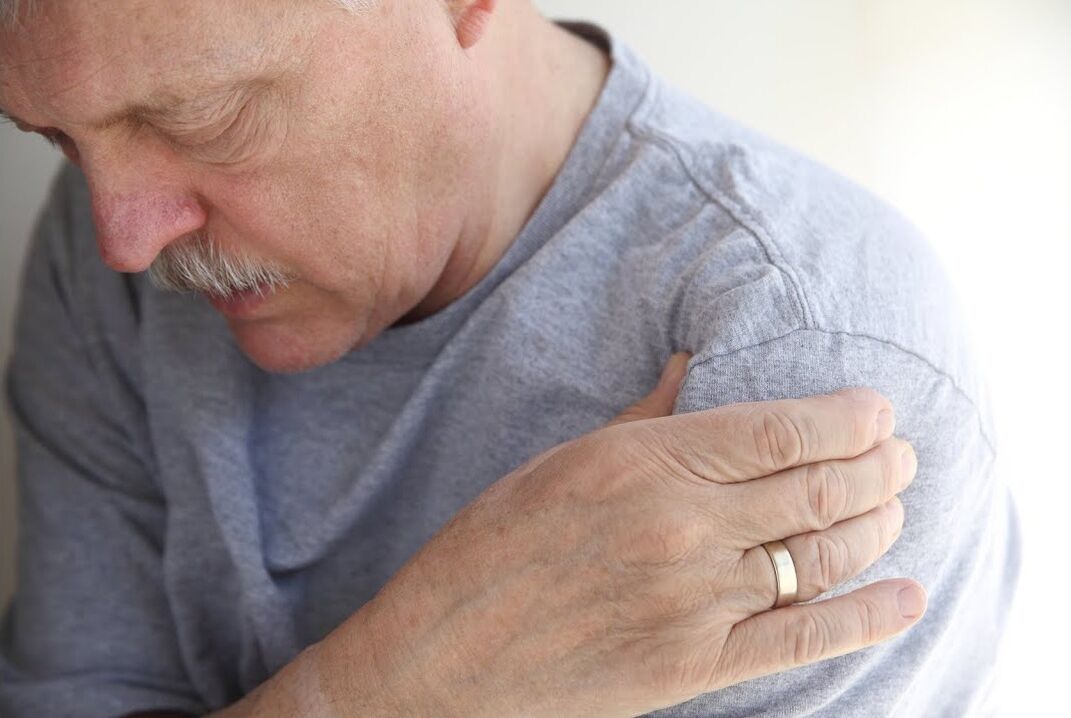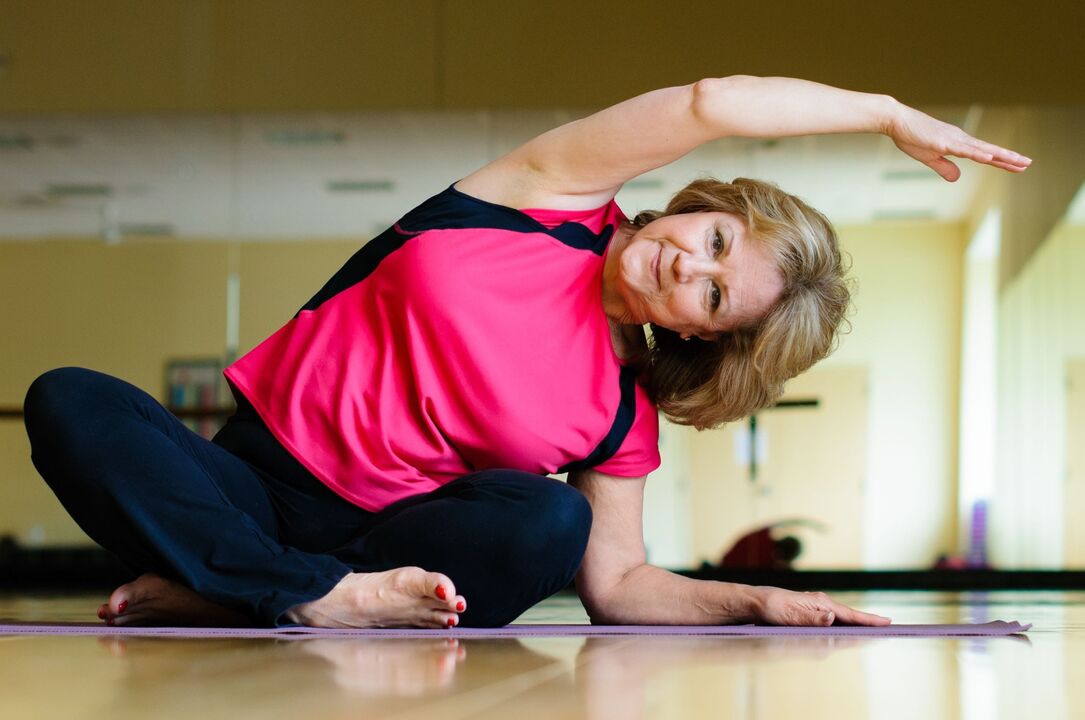
Shoulder joint problems are not as frequent as those of the hip or knee, but they do exist, and among them it is worth highlighting shoulder joint arthrosis, whose symptoms and treatment have their own characteristics. In most cases, a rheumatologist deals with these problems. In general, arthrosis of the shoulder joint has its own specific symptoms and is characterized by degenerative processes not only in the cartilage itself. Capsules, ligamentous apparatus and articular bags, of which there are many, often suffer.
As a result of everything that happens, the joint is deformed, the range of motion is limited. In addition to the fact that such a condition develops, arthrosis is accompanied by pain. The reasons for this condition can be very different, we will try to understand them in detail.
What makes it all happen
The inflammatory process leads to the consequences of arthrosis of the shoulder joint. It develops due to various factors, some are fought by a rheumatologist, and some will require the help of a traumatologist.
The most common cause of osteoarthritis is traumatic injury. This is observed in athletes as a result of microtrauma, during a common dislocation or after a fracture. Then arthrosis is post-traumatic and requires its own approach to treatment.
With the pathology of blood vessels, tissues experience a lack of oxygen, tissue dystrophy occurs. As a result, arthrosis of the right and left shoulder joint develops. Often this condition can be observed with excessive physical strain.
Often the reasons lie in hormonal disruptions or autoimmune cartilage damage. In the latter case, a rheumatologist deals with such arthrosis of the shoulder joint. Arthrosis occurs, for example, with psoriasis, gout.
It is believed that the causes can be hidden in heredity, especially if the parents suffered from this disease. Also, arthrosis can develop in people with congenital defects of the shoulder joint.
Symptoms can also appear due to age, as the cartilage wears away. At risk are people over 50 years old.

Symptoms
Osteoarthritis of the shoulder joint develops over a long period of time and its symptoms do not go away. In this regard, you should constantly monitor the condition of the shoulder joint and, if even mild symptoms appear, immediately consult a doctor.
Everything starts with pain, which initially manifests arthrosis. The wrist hurts, especially in the morning or when the weather changes. During weight lifting, this symptom is also actively felt, often the shoulder area cannot even be touched. As symptoms progress, arthrosis appears even at rest. In addition to joint pain, symptoms can be in the back, forearm or elbow.
The symptoms are complemented by the limitation of movements, the main reasons for this lie in pain. A person normally cannot perform simple actions, for example, to brush or brush their teeth.
The itch simulation test allows you to detect the presence of arthrosis.
It is also difficult to reverse. If medication and gymnastics are not prescribed in time, then contractions simply cannot be avoided.
It complements the symptoms of cracking, which can appear at any degree. It occurs due to the growth of bone tissue and, at an early stage, only the person himself feels it, and then it is heard even at a distance. Swelling joins and not only the wrist, but also the shoulder, the forearm, the skin can be red. All this indicates the presence of an inflammatory process.

In a late stage of the disease, abduction of the arm to the side becomes a problem. This happens due to growths that cover the joint area in abundance. There are some specifics depending on the degree - at each stage, the disease can manifest itself in different ways.
Depending on the degree
In the first stage of the disease, the pain bothers only in the morning and in the evening. It may take time for a person to get rid of the "stiffness". A sharp movement is accompanied by a slight crack, which is not the cause of pain.
At rest, with this degree of pain, there is no pain in the same way that there are no changes in the x-ray film. Everything begins in the second degree, when the manifestations become more pronounced.
Symptoms in the second stage are complemented by a more pronounced creaking and pain. It is no longer possible to fully move the arm, however joint mobility is preserved. At this stage, the destruction and deformation of the cartilage occurs, there are characteristic manifestations on X-rays.
In the third degree, the process can be considered fluid and the drug treatment already has minimal success. In this case, only light rocking movements are possible, and sharp pain becomes a constant companion. The joint area becomes very inflamed, deformity joins, pain in the shoulder and forearm area. Thus, post-traumatic arthrosis is most often manifested, which can be in the area of the right or left shoulder joint.

If you do not perform special exercises, the muscles will atrophy. Only surgical treatment can help in this case. However, it rarely reaches this stage, only in the case of persistent overloads.
With the fourth degree, it is not necessary to talk about the node, as such, because it simply does not exist. Post-traumatic arthrosis leads to this condition, especially if the injury is severe. Drugs, even powerful ones, are not able to cope with the pain. You can meet this stage in the elderly and the elderly. The pain often radiates to the forearm and only adequate treatment can help.
Treatment
There are special medications that can stop the disease. The main thing is to prescribe treatment with them as soon as possible, even if the arthrosis is post-traumatic.
medicaments
In the first place are non-steroidal anti-inflammatory drugs. There are a large number of them and only a doctor can choose the right one. In addition to reducing pain, the inflammatory process is also removed. Treatment with these drugs is carried out in courses, otherwise, the effect on the cartilage may be negative.
Also, the drugs have a negative effect on the gastric mucosa. With care, they are assigned to those who have problems with this organ. Long-term use may result in ulcers.

Local treatment
With a strong inflammatory process, hormone-based drugs are injected into the joint. Medicines have a local anti-inflammatory effect, however, this is not safe for the joint itself, as it destroys the cartilage. The local use of ointments is justified, which also effectively relieve pain.
The scheme is supplemented with drugs called chondroprotectors. It will take a long time to treat the disease with these drugs, but they contribute to the restoration of cartilage tissue and the normal functioning of the joint. The composition includes glucosamine, chondroitin sulfate and hyaluronic acid. The effect continues for a long time, even after stopping the drugs.
Physiotherapy and gymnastics
There are many techniques that practically do not use drugs, but allow you to get excellent results. With this disease, treatment is carried out with the help of:
- magnetic therapy;
- therapeutic baths;
- laser;
- ultrasound;
- vile.
In parallel, special exercises are performed to increase the range of motion in the joints. Gymnastics has many techniques that are prescribed depending on the degree and stage of the disease.

It is best to perform the exercises under the supervision of an experienced doctor, who will choose the optimal ones.
operation
When gymnastics and drug treatment do not help, it is necessary to perform surgery. A shoulder joint replacement can solve the problem. They completely replace everything old and worn out, the prosthesis itself is made of metal or ceramic. The service life of such an implant is approximately 15 to 25 years.
To treat this disease is very difficult and not always possible. Success has only an integrated approach, in which the treatment consists of drugs that are supplemented with gymnastics or special exercises, physiotherapy. Especially worried about the disease in the right shoulder, since this is the working hand.
It is better to treat the disease at an early stage and not take it to extremes. If arthrosis is treated in the first stage, many negative consequences can be avoided. But it is not recommended to treat this disease yourself.
































